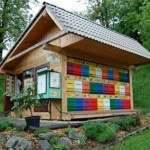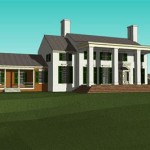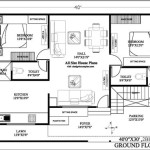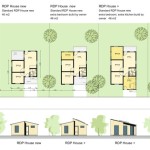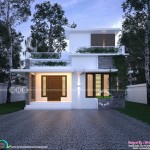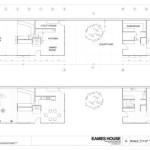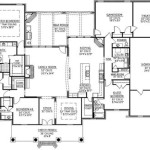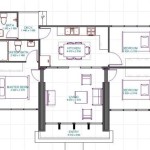Understanding the Baltimore Row House Floor Plan: A Historical and Practical Guide
Baltimore row houses, a defining architectural feature of the city, represent a significant chapter in urban housing history. Their distinctive design, born from necessity and influenced by various cultural and economic factors, continues to shape the city’s landscape and provide a unique living experience. Understanding the floor plan of a Baltimore row house is essential for appreciating its historical context, adapting it to modern lifestyles, and navigating the challenges and opportunities presented by these iconic structures.
The development of the Baltimore row house is intertwined with the city's rapid growth in the 19th and early 20th centuries. As Baltimore became a major port and industrial center, the demand for affordable housing intensified. Row houses, offering a high density of dwellings within a limited space, emerged as the dominant solution. These structures were typically built in long, continuous rows, sharing side walls, and creating a cohesive urban streetscape. The floor plans reflected the needs and constraints of the time, prioritizing functionality and affordability.
Originally designed for working-class families, Baltimore row houses were often characterized by small rooms and limited amenities. Over time, the architectural styles and interior layouts of these houses evolved, reflecting changes in building technology, living standards, and aesthetic preferences. From the simple, utilitarian designs of the early 19th century to the more ornate and spacious layouts of the late 19th and early 20th centuries, the Baltimore row house underwent a significant transformation. The diverse range of styles, including Federal, Greek Revival, Italianate, and Victorian, adds to the city's architectural richness and provides a glimpse into its past.
Today, many Baltimore row houses are undergoing renovations and adaptations to meet the demands of modern living. Understanding the original floor plan and its inherent limitations is crucial for successful renovation projects. Whether preserving historical features or creating open-concept layouts, careful planning and consideration of structural integrity are essential. Furthermore, awareness of local building codes and regulations is necessary to ensure compliance and avoid costly mistakes. This article will provide a comprehensive overview of the key features, variations, and challenges associated with Baltimore row house floor plans, offering valuable insights for homeowners, architects, and anyone interested in the city's unique architectural heritage.
Key Point 1: Typical Floor Plan Layout and Variations
The typical Baltimore row house floor plan generally comprises three or four stories, with a narrow footprint and a rectangular shape. The front façade, often adorned with decorative elements such as stoops, window surrounds, and cornices, contributes to the overall street presence. The rear of the house typically features a small yard or alley access. The interior layout commonly includes a central staircase connecting the different levels, with rooms arranged on either side. However, significant variations exist depending on the period of construction, architectural style, and original intent of the building.
The first floor of a traditional Baltimore row house often served as the primary living space, featuring a parlor or living room in the front and a dining room or kitchen in the rear. In some cases, the kitchen was relegated to the basement level to minimize odors and heat. The second floor typically housed the main bedrooms, while the upper floors were reserved for additional bedrooms, storage, or servants' quarters. The basement, often partially or fully underground, provided additional storage space and sometimes housed utilities like the furnace and laundry facilities.
Variations in the floor plan were influenced by factors such as the width of the house, the depth of the lot, and the social status of the original occupants. Wider row houses, more commonly found in affluent neighborhoods, tended to have larger rooms and more elaborate layouts. Some row houses featured double parlors, interconnected living rooms that provided ample space for entertaining. Others included features such as back buildings, small additions at the rear of the house that served as kitchens, workshops, or additional living space. These variations reflect the diverse needs and preferences of the residents and the evolving architectural trends of the time.
Modern renovations often involve significant alterations to the original floor plan. Common modifications include opening up walls to create open-concept living spaces, relocating the kitchen to the main floor, and adding bathrooms or enlarging existing ones. However, these alterations must be carefully planned to ensure structural integrity and preserve the historical character of the building. The removal of load-bearing walls, for example, requires proper support and reinforcement to prevent structural damage. Furthermore, the preservation of original architectural details, such as moldings, fireplaces, and staircases, is often a priority for homeowners seeking to maintain the historical integrity of their row houses.
Key Point 2: Challenges and Opportunities in Modernizing the Floor Plan
Modernizing a Baltimore row house floor plan presents both challenges and opportunities. The narrow footprint and fixed structural elements can limit design possibilities, while the historical character of the building often imposes constraints on renovation options. However, these challenges can also be viewed as opportunities to creatively adapt the existing space and create unique and functional living environments. Careful planning, innovative design solutions, and a respect for the building's history are essential for successful modernization projects.
One of the primary challenges is the limited natural light. Row houses, often situated in dense urban environments, can suffer from poor lighting, particularly in the interior rooms. Strategies to address this issue include installing skylights, adding windows to the rear façade, and using light wells to bring daylight into the interior. The strategic use of mirrors and reflective surfaces can also help to maximize the available light. Furthermore, the selection of light-colored paint and finishes can brighten up the space and create a more open and airy feel.
Another significant challenge is the lack of open space. The traditional row house floor plan, with its small, compartmentalized rooms, can feel cramped and restrictive by modern standards. Opening up walls to create open-concept living spaces is a common solution, but it requires careful consideration of structural implications. The removal of load-bearing walls necessitates the installation of beams or other structural supports to maintain the integrity of the building. Furthermore, the creation of open spaces can impact the flow of heat and air, requiring adjustments to the HVAC system.
However, the modernization process also presents opportunities to enhance the functionality and aesthetic appeal of the row house. Creating a modern kitchen with updated appliances and ample counter space can significantly improve the living experience. Adding a bathroom on each floor can increase convenience and comfort. Incorporating energy-efficient features, such as insulation, double-paned windows, and high-efficiency heating and cooling systems, can reduce energy consumption and lower utility bills. Furthermore, the integration of smart home technology can automate various functions and enhance security.
Ultimately, the success of a modernization project depends on a careful balance between preserving the historical character of the building and adapting it to meet the demands of modern living. Understanding the original floor plan, identifying the key structural elements, and developing a comprehensive design plan are essential for achieving a successful outcome. Collaboration with experienced architects, contractors, and preservation specialists can help to ensure that the renovation project is both aesthetically pleasing and structurally sound.
Key Point 3: Structural Considerations and Building Codes
Any renovation or modification of a Baltimore row house floor plan must prioritize structural integrity and compliance with local building codes. These structures, often dating back over a century, may have inherent structural weaknesses or be subject to specific regulations designed to protect their historical character. A thorough assessment of the building's structural condition, coupled with a meticulous understanding of applicable building codes, is crucial for ensuring the safety and longevity of the renovation project.
One of the primary structural considerations is the condition of the foundation. Row houses, particularly those built in areas with poor soil conditions, may experience foundation settlement or cracking. These issues can compromise the structural integrity of the entire building and must be addressed before any other renovations are undertaken. Foundation repairs may involve underpinning, crack injection, or the installation of drainage systems to prevent further damage. A qualified structural engineer should be consulted to assess the condition of the foundation and recommend appropriate repair methods.
Another important structural consideration is the condition of the load-bearing walls. These walls, which support the weight of the floors and roof, are critical to the stability of the building. The removal or alteration of load-bearing walls requires careful planning and the installation of adequate support structures. Steel beams or columns are commonly used to transfer the load from the walls to the foundation. A structural engineer should be consulted to determine the appropriate size and placement of these support structures. Failure to properly support load-bearing walls can lead to structural damage and even collapse.
Compliance with local building codes is also essential. Baltimore City has specific building codes and regulations that govern the renovation and alteration of existing structures. These codes address a wide range of issues, including structural safety, fire protection, accessibility, and energy efficiency. Furthermore, certain neighborhoods or historic districts may have additional regulations designed to preserve the architectural character of the area. Obtaining the necessary permits and approvals from the city's building department is crucial for ensuring compliance and avoiding costly fines or delays.
In addition to structural and code considerations, the presence of hazardous materials, such as lead paint and asbestos, must be addressed. Many older row houses contain lead-based paint, which can pose a health hazard, particularly to children. Asbestos, a known carcinogen, may be present in insulation, flooring, or roofing materials. Proper remediation procedures must be followed to safely remove or encapsulate these materials. Hiring qualified professionals trained in lead and asbestos abatement is essential for ensuring the safety of occupants and workers.

Community Architect Anatomy Of The Baltimore Rowhouse

Building The Best Baltimore Rowhomes And Neighborhoods Greenbuildingadvisor

Row House Layout Bing Images Floor Plans

Building The Best Baltimore Rowhomes And Neighborhoods Greenbuildingadvisor
Design Manual

Breaking The Baltimore Runoff Machine Ecosystem Study

Rowhouse Floor Plans

3 Bedroom Townhomes In Baltimore Md Refinery Row
Design Manual

E Rowhouse Diagrams Learning From Surrounding Building Typology Row House Floor Plans

